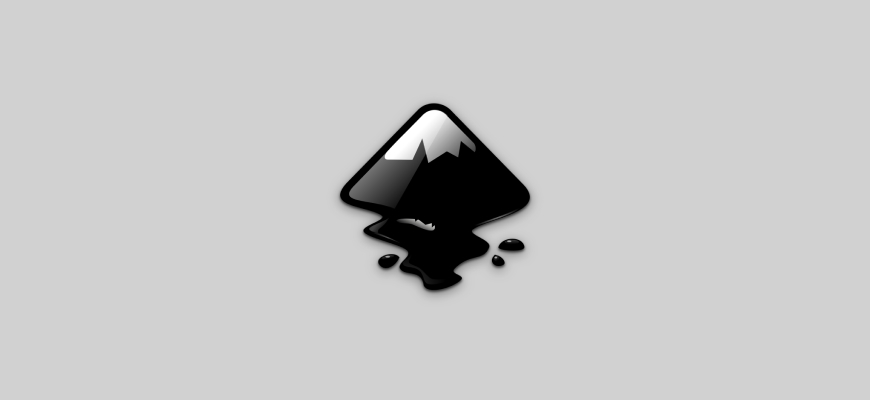Antivirus
Photo & Video
Programming & Design
Office Management
Other

In the world of graphic design, having access to the right tools is essential for creating professional-quality work. One such tool is Inkscape, a powerful and feature-rich vector graphics editor. In this comprehensive Inkscape review, the ins and outs of this remarkable software will be explored, including its features, pricing, customer support, and pros and cons. By the end of this article, readers will have a better understanding of whether Inkscape is the right choice for their design needs.
Free DownloadTable of Contents
Inkscape is an open-source vector graphics editor that allows users to create and edit vector images, such as logos, illustrations, and icons. Unlike raster graphics editors like Photoshop, which work with pixels, Inkscape uses mathematical equations to represent images, ensuring they maintain their quality and crispness even when scaled up or down.
Inkscape was first released in 2003 as a derivative of the Sodipodi project. Since then, it has grown into a robust and versatile graphics editor with a large community of users and developers. One of Inkscape’s most significant selling points is that it is completely free to use, making it an attractive option for designers on a budget or those looking for a more affordable alternative to premium vector graphics software like Adobe Illustrator.
Inkscape supports a wide range of file formats, including SVG, PNG, PDF, and EPS, making it easy to work with various types of projects. It also offers a plethora of features and tools that cater to both novice and experienced designers alike, such as layers, paths, text tools, and advanced object manipulation.
Getting started with Inkscape is relatively straightforward. The software can be downloaded from the official Inkscape website and is available for Windows, macOS, and Linux. Once installed, users can familiarize themselves with the interface, which is organized into various panels, toolbars, and menus.
The primary workspace in Inkscape is the canvas, where users can create and edit their vector graphics. The left toolbar contains a selection of tools for drawing, shaping, and manipulating objects, while the top toolbar offers options for aligning, distributing, and transforming elements. The right-hand panels provide access to advanced features such as layers, gradients, and filters.
To create a new vector graphic, users can select a tool from the left toolbar and begin drawing on the canvas. For example, the pen tool can be used to create custom shapes by clicking and dragging anchor points, while the text tool allows for the addition of text elements. Once the basic elements are in place, the user can employ various tools and features to refine the design, such as adjusting colors, applying gradients, or adding filters.
Inkscape also includes a helpful set of tutorials and documentation on its website. These resources can be invaluable for users looking to expand their knowledge of the software and learn how to achieve specific effects or techniques.
One of the most appealing aspects of Inkscape is its cost – or lack thereof. Inkscape is entirely free to use, as it is an open-source program maintained by a dedicated community of developers and contributors. This means that users can access all of the software’s features and tools without having to spend a single cent.
This cost-effectiveness makes Inkscape an attractive option for freelance designers, small businesses, and hobbyists who may not be able to justify the expense of premium vector graphics software like Adobe Illustrator. It also allows users to experiment with vector design without committing to a pricey subscription.
As mentioned earlier, Inkscape is entirely free to use. There are no hidden fees or subscription costs associated with the software, and users can access all of the program’s features without limitation. This is a significant advantage for those on a tight budget or who are looking for a cost-effective way to explore the world of vector graphics design.
For users who wish to support the continued development of Inkscape, the project accepts donations via its website. Donating is entirely optional but can help ensure that Inkscape remains a viable and evolving tool for the design community.
Free DownloadDespite being a free and open-source project, Inkscape offers a helpful and active community to assist users with any issues or questions they may have. The software’s website includes a comprehensive documentation section that covers various aspects of the program, from getting started to advanced techniques.
Additionally, users can find support through the Inkscape forums, where they can ask questions and receive answers from experienced users and developers. There are also numerous online tutorials, both written and video, created by Inkscape users that cover specific topics and techniques.
While Inkscape may not provide the same level of direct customer support as some premium software options, the wealth of community-driven resources and assistance available can help users overcome any challenges they may encounter while using the program.
Like any software, Inkscape has its pros and cons. This section will delve into some of the most notable aspects to consider when deciding if Inkscape is the right fit for one’s design needs.
Inkscape is a powerful and versatile vector graphics editor that offers a wide range of features and tools for designers of all skill levels. Its open-source nature and cost-effectiveness make it an attractive option for those on a budget, while its active community and support resources ensure that users can receive assistance and guidance when needed.
While Inkscape may have a steep learning curve and may not integrate seamlessly with other software, its scalability and quality, along with its broad range of features, make it a popular choice for designers looking for a free and robust vector graphics editor.
Overall, Inkscape is a valuable addition to any designer’s toolkit, and its pros far outweigh the cons. Whether you’re a freelance designer, small business owner, or hobbyist, Inkscape is worth exploring for all your vector graphics needs.